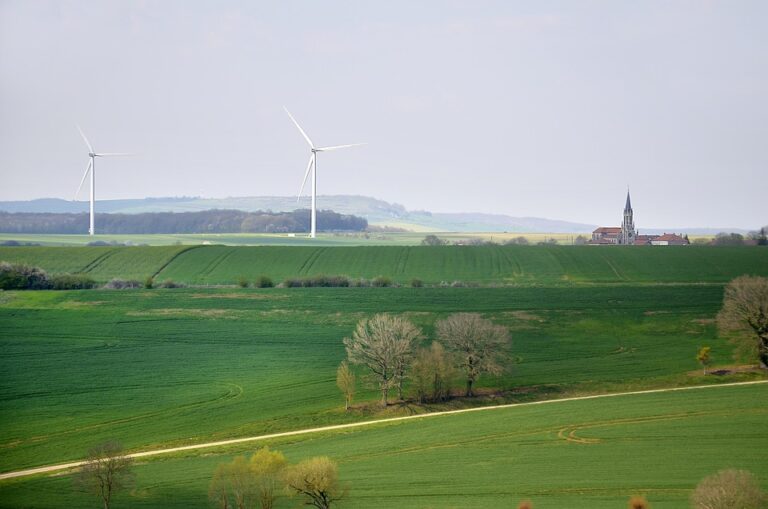Greening Innovation: How Sustainable Tech is Shaping Our Future
In an era marked by urgent environmental challenges, sustainable technology (or sustainable tech) stands out as a beacon of hope. From renewable energy solutions to eco-friendly products, sustainable tech is redefining how industries operate and how consumers engage with the environment. As we look toward a greener future, understanding the impact and potential of sustainable technology is crucial.
The Rise of Sustainable Tech
Sustainable technology refers to innovations that minimize environmental impact while promoting social responsibility. A recent report by the International Renewable Energy Agency (IRENA) highlights that renewable energy capacity has grown by 10% annually since 2010 and is projected to continue its upward trend. This trend is driven by advancements in technology and a global push for decarbonization.
Moreover, the global market for sustainable technology is expected to reach $2.3 trillion by 2025, indicating that businesses and consumers are increasingly prioritizing sustainable solutions. Companies across various sectors are adopting sustainable practices, understanding that eco-friendly choices can drive profitability while contributing positively to the planet.
Key Areas of Sustainable Tech
Renewable Energy
One prominent area where sustainable tech is making significant strides is in renewable energy. Wind, solar, and hydroelectric technologies have become more efficient, more accessible, and less expensive. For example, the cost of solar photovoltaic (PV) systems has dropped by over 80% since 2010, making solar energy a viable option for households and businesses alike. This drastic price reduction is reshaping the energy landscape, leading to increased adoption and installations worldwide.
Sustainable Agriculture
Another critical sector benefiting from sustainable technology is agriculture. Innovations like precision farming utilize data analytics and IoT (Internet of Things) devices to optimize resource use while reducing waste. For instance, farmers can monitor soil health, crop growth, and water usage more effectively, ensuring a sustainable approach to food production. The use of drones for monitoring large fields can result in a 30% reduction in water usage, demonstrating how technology can enhance sustainability in agriculture.
Eco-Friendly Transportation
Transportation is another area where sustainable tech is thriving. The shift towards electric vehicles (EVs) is a prime example. With many countries setting ambitious targets to phase out fossil fuel vehicles, manufacturers are investing heavily in the EV market. The global electric car stock surpassed 10 million cars in 2020, marking a 43% increase from the previous year. This surge is indicative of changing consumer preferences and a growing commitment to reducing carbon footprints.
Sustainable Materials
Lastly, the development of sustainable materials is crucial for industries ranging from fashion to construction. Alternatives like biodegradable plastics and organic textiles are becoming more mainstream, as consumers demand environmentally responsible products. For instance, the fashion industry is witnessing a shift towards using recycled materials, with brands such as Adidas committing to produce millions of shoes made from ocean plastic.
Challenges and Innovations Ahead
While the growth of sustainable tech offers promising solutions, several challenges persist. Those involved in sustainability face issues like supply chain management, technological barriers, and capital investment. Nonetheless, innovation continues to break these barriers, with startup companies and research institutions rolling out pioneering solutions that promise to reduce our global environmental impact even further.
One promising example is the development of carbon capture and storage (CCS) technology. CCS involves capturing carbon dioxide emissions from sources like power plants and storing them underground to prevent them from entering the atmosphere. According to the Global CCS Institute, there are currently 26 commercial-scale CCS facilities worldwide, with plans for more in the coming years, illustrating the ongoing shift towards more effective sustainable solutions.
Conclusion: The Future is Green
As we look to the future, it’s clear that sustainable technology will play a critical role in shaping our world. By focusing on the principles of sustainability, innovation, and social responsibility, we can create a future that not only addresses pressing environmental concerns but also enhances the quality of life for all.
For readers interested in exploring more about the intersection of innovation and sustainability, consider reading “The Impact of Renewable Energy in Everyday Life” and “How the Food Industry is Going Green” on buzzo.live. For further insights into global sustainability initiatives, visit IRENA’s Renewable Energy Reports and check the Global CCS Institute for the latest on carbon capture technology.
By embracing sustainable tech and encouraging responsible choices, we can all contribute to a greener, more sustainable future. The path to a better tomorrow is paved with innovation and determination; let us walk it together.
Image Suggestions:
- A solar farm with vast panels under a blue sky – Alt text: Sustainable Tech in renewable energy – solar farm.
- An electric vehicle charging station in an urban area – Alt text: Sustainable Tech in transportation – electric vehicle charging.
By implementing sustainable technology in our lives, we can lead the change towards an eco-friendly future that nurtures the planet.


